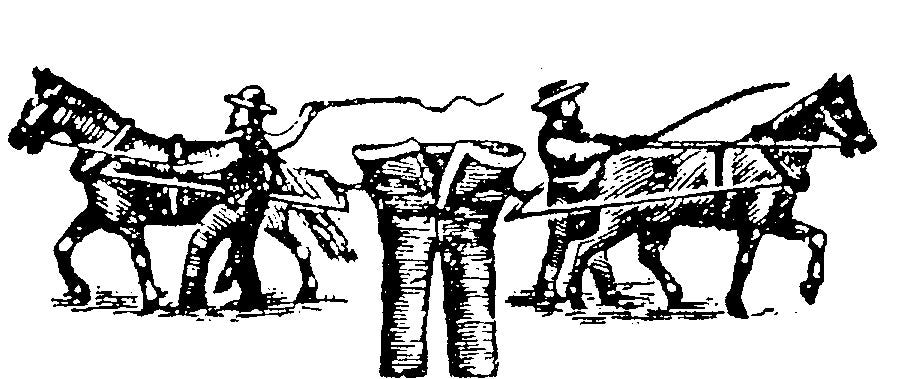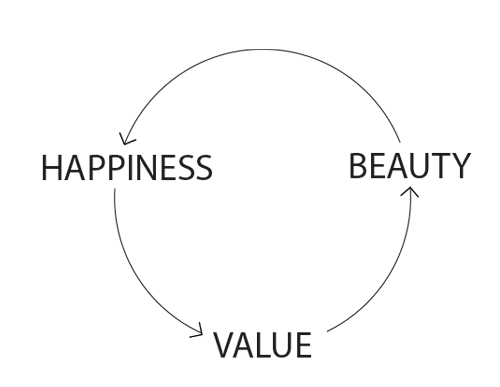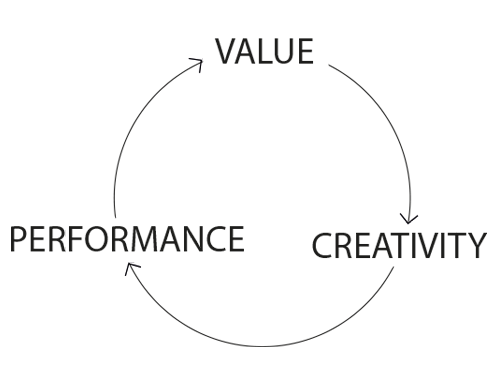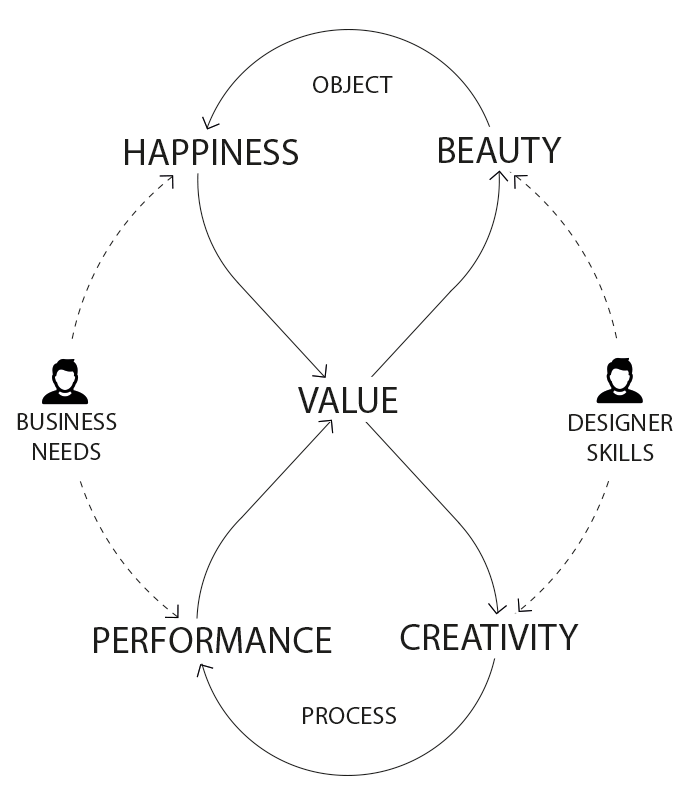How The Design World Is Being Ripped Apart Right Now


How The Design World Is Being Ripped Apart Right Now
Now that Design is on the move from the marketing & communication departments to the boardrooms, designers are faced with a huge dilemma. The Design world is changing and designers have to make a move. Consultancy agencies are moving into the new space that is opening up between business strategy, IT development and creative design. The complex, fast-paced challenges clients are facing require a new kind of integrated approach that combines the best of business, technology, and design. In this new flaying field, designers have to position themselves. They have to respond. They have to come up with an answer or get pushed out of the game.
The value dilemma
On the one hand, designers see the huge opportunities opening up to move into a more strategic position. On the other hand, the (business) capabilities that are required for this leap are far removed from the reason why they started with design in the first place, why they get up in the morning. This week I saw two interviews with two different people that occupy the exact opposite of this spectrum: Stefan Sagmeister
- Should Design defend the value of beauty and be less aligned with the ideas of value that companies have?
Or,
- Should Design let go of the idea of beauty as a goal, focus on opening up the creative process, and become more valuable as a service to companies?
Noun or verb, that is the question
The dilemma circles around the idea of what design is:
- Is Design a noun? Is it the thing that designers make, the object?
- Or is Design a verb? Is it the thing that designers do, the process?
The case of Stefan Sagmeister
Stefan Sagmeister is a well-known designer from New York. In the discussion about beauty versus functionality, Sagmeister pushes the idea of the function of beauty. He argues that making an object more beautiful is adding to its functionality. He talks about adding emotion, delight, love, and care to make objects more human, more sustainable. He also argues for keeping the process closed. He says that great designs are always made by one person, never a group. The result of his ideology is that he is able to produce designs that are stunning and make people happy.
The downside of his approach is that it takes more time to create things of true beauty, the type of beauty that really adds a sustainable delight function to objects. The last 10 percent to get it perfect typically take as long as getting from 0 to 90 percent. In software development, they call this the 90–90 rule, but it is the same in design. In a commercial world, the question is: who is going to pay for that? Culturally aware clients with deep pockets? Or the designer himself? Sagmeister is known for creating an environment that gives him the freedom to do low paying jobs. But this space and independence come at a price. You have to be able to work with very little overhead, be creative with finances and be able to deliver super high-quality work that justifies all the effort and sacrifices you make. In the design donut, he is way over on the side of the artist. In his interview, he states making money is the only disadvantage of his approach. Design can have a sustainable functional value, but the price is high. Either the designer or the client has to pay the price.



Sagmeister uses the following value system for designers:
- Beautiful products create happiness.
- Happiness creates value for companies because happier users buy more of the product or are willing to pay a premium.
- This value for companies gives beauty its value.

The case of Stephen Gates
Stephen Gates is the newly appointed Head of Design Transformation at InVision. He takes a totally different approach. He sees design as a set of capabilities that can be applied to more processes than the traditional design process that produces beautiful objects. He believes that creativity is going to be the stock-in-trade of designers. Complexity, pace and need to connect to the user creates a huge need for creativity, visualization, and making things in business today. And Design is in an excellent position to meet those needs and have a huge impact on the performance of companies. He argues for opening up the process to others, become more empathetic to the needs and input of stakeholders and users, and being willing to fail publicly. The result is that if designers take this approach they can move to more strategic tables, have more impact, add more value to a business and charge higher fees.
The downside of this approach is that all people involved have to get comfortable with being uncomfortable. This approach works if you can take the client on a journey to a place that is unknown at the start. It also requires an open attitude from designers. They have to open up their process to others. Designers also need to up their business game. They have to understand how businesses work, what challenges businesses face and how design can help. And business thinking and business language is not something most designers like. Business people are a totally different breed and most designers don’t want or are not able to cross that bridge.



Gates uses the following value system for designers:
- The creativity designers bring make businesses projects perform better.
- Better projects create more value for companies.
- This value for the business gives creativity its value.

Choose your battles
Both approaches need clients that are willing to pay and are willing to participate in a specific process. You either pay for beauty or for creativity. You either hand over a briefing or co-create.
Both approaches ask a lot of designers. You either have to be able to produce very high-quality beautiful work or be able to walk and talk business. You either value beauty or creativity.
One is moving against and the other with the grain. With the rise of Design Thinking, Service Design, Business Design and however you call it, the momentum seems to be towards design as a process. Fighting for beauty is going against conventional wisdom. Both positions are valid. Both positions require certain skills and talents one needs to possess. It’s a matter of choosing your battles and assessing your skillset.
Faustian Bargain
Can’t designers just add creativity to business processes and create high-quality beauty at the same time? This dilemma might seem like a Faustian Bargain to some in which the designer abandons his or her spiritual values or moral principles in order to obtain knowledge, wealth or other benefits.
Sell your Design-soul if you open up the process
If you listen to Sagmeister, one could think you are betraying Design, or even the human race if you open up your process and deliver creativity instead of beauty. He sees an opportunity for digital designers. If they can create beauty online as he creates it in offline products, the riches will be immense. What he doesn’t realize is that it takes more than a nice User Interface to create beauty online. The service you are using also has to work properly and deliver value. And that means working with the technology department, the organizational processes, business cases, project management, corporate strategy etc. It’s useless to act as the sole genius designer in this context. Stakeholder engagement is far more important than expressing your personal idea about beauty. If the designs get too outspoken, they get in the way. That doesn’t mean there is no room and need for delight. When everything becomes more uniform, the small details in the interaction can build a connection, add personality. But in a world of Agile development, it’s tough to prioritize quirky interactions over functional features. It’s one thing to design something, it’s another to get it built. Extraordinary design not only takes more time to design, but it also takes more time to get built. You have to make a business case for the additional effort, you have to show the added value or pay for it yourself.
Sell your Design-soul if you stick to beauty
If you listen to Gates, you might think you are doing Design a disservice if you care about beauty. He sees an opportunity for designers that want to open up their process and use creativity as their service. The problem with this approach is that if you neglect beauty, the creativity of the designer becomes less powerful. Beauty gives the designer his power. Beauty creates the engagement, the inspiration, the energy that enhances the performance of projects. If you can incorporate the function and value of beauty in the creative process, your process becomes more powerful.
The synergy model
I believe the true power of the designer lies in the combination of the two value systems for the designer mentioned above. If the designer can provide both beauty and creativity, he can meet both the needs of the business: happiness and performance, the soft and the hard. And he can use both parts of his skill set: creating objects and the creative process.


This way the designer can have his cake and eat it. Some designers might operate more on the process side, but they can deliver more value if they also use the beauty value systems a bit. Other designers will want to work on the object side. But their designs will also benefit from focussing more on an open process and co-creation. This way you have access to better questions, and deeper insights.
“Design Leadership is about embracing this ambiguity, about standing at the intersection of these seemingly contradictory truths.”
